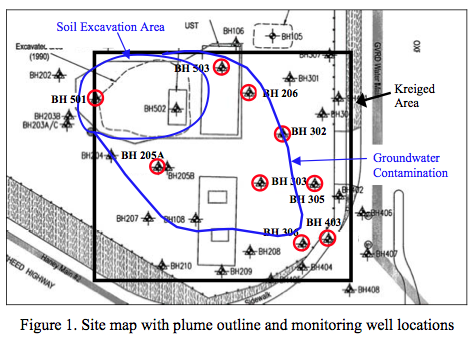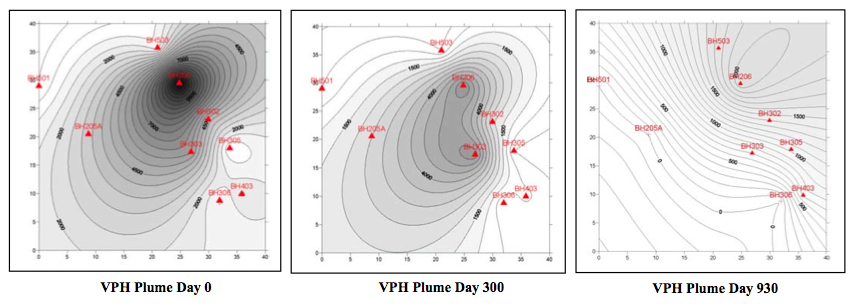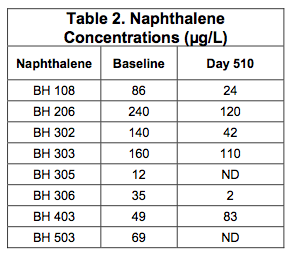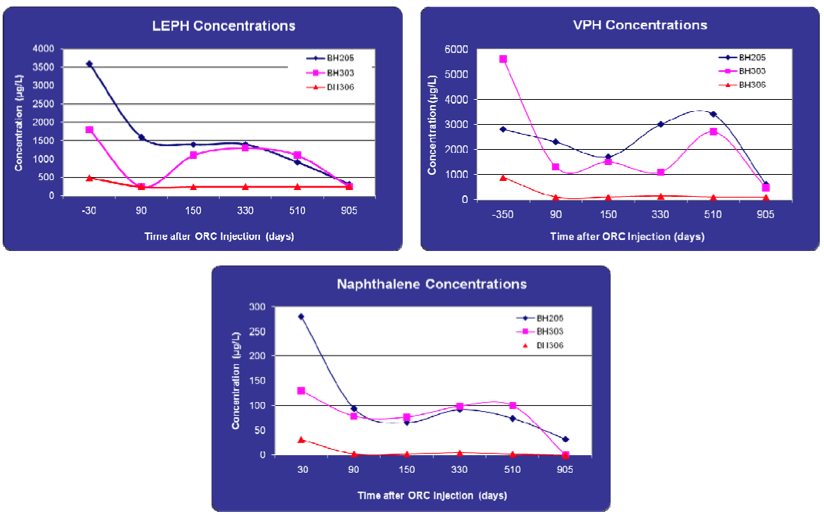Site Closure via In Situ Aerobic Bioremediation of Petroleum Hydrocarbons
Summary
A former fueling facility in Port Coquitlam, BC contained four USTs and accompanying dispensers. The USTs were removed in 1990 after volatile petroleum hydrocarbon (VPH) concentrations were found above regulatory limits. Well BH206 had significant VPH and naphthalene concentrations reaching 13,000 μg/L and 240 μg/L, respectively. In addition, wells BH 303 and BH 205A had concentrations of VPH as high as 5,600 μg/L.


Remediation Approach
Excavation activities removed approximately 1,300 m3 of contaminated soil which were later disposed of at a permitted facility. Following the excavation, a groundwater remediation program was implemented using 1,350 lbs of Oxygen Release Compound (ORC®). An ORC slurry was added to the backfill and injected into the groundwater plume to further reduce VPH concentrations as well as light extractable petroleum hydrocarbons (LEPH). A second application using 500 lbs of ORC Advanced® was applied one year after the ORC application to continue reducing trends of petroleum hydrocarbons.
VPH Time Lapse Shots

Results
As shown in the VPH time lapse shots on the front, VPH reduction occurred across the plume. Approximately, one year after injection VPH declined from 13,000 μg/L to 4,300 μg/L in well BH206 and well BH303 showed a decrease of 80%. Downgradient of the source area VPH was reduced below cleanup goals. Prior to injection, a total of 7 wells had LEPH concentrations above the standard (500 μg/L). By day 510, four wells reached concentrations below cleanup goals. Reduction of naphthalene was also seen across the contaminated area (Table 2). Most notable are the 3 wells that reached the cleanup standard 510 days after injection.
Within 3 years of the initial application, all contaminants of concern were reduced to below the cleanup goals. Concentrations of VPH and LEPH were reduced by 1 to 2 orders of magnitude and naphthalene declined from a high of 280 μg/L to 7.9 μg/L. The site achieved closure approximately 5 years after commencing remedial treatment.




 Americas
Americas Europe
Europe Français
Français Deutsch
Deutsch Italiano
Italiano Español
Español
